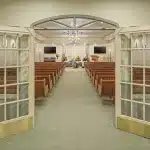The New York Times Connections puzzle has become one of the most popular and engaging word games for puzzle enthusiasts. Every day, the game presents a unique challenge, testing players’ skills in word categorization, logical reasoning, and semantic analysis. For today, May 2, 2025, Puzzle #691 presents its own set of challenges. In this article, we’ll break down the NYT Connections hints, give you a strategy guide, and explore the puzzle categories in depth. Let’s dive into how you can approach this puzzle like a pro.
Hints for the Themes in Today’s Connections Puzzle
Overview of Today’s Puzzle
The NYT Connections puzzle is designed to have four distinct categories of words that need to be grouped together based on common themes. In Puzzle #691, we have 16 words that seem unrelated at first, but with careful analysis, they can be grouped into four sets of four related words. Today’s puzzle challenges players with themes that involve museum carvings, Greek temple art, pillar support, and BBQ foods.
Players must use their knowledge of cultural history, cooking, and architectural features to categorize the words correctly. The key to solving this puzzle is recognizing patterns and leveraging word association. In addition, there are often hidden clues within the words themselves—be on the lookout for these subtle hints!
Categories Breakdown
Category 1: Museum Carvings
- This category includes words related to famous works of art and sculpture often seen in museums around the world.
- Hint: Think of monumental artworks that have been created in relief or as part of historical buildings.
Category 2: Greek Temple Art
- Words in this category focus on art and architectural features from ancient Greek temples.
- Hint: Ancient Greek temples are known for their columns, sculptures, and decorative details.
Category 3: Pillar Support
- Words in this group are associated with structures that hold or support larger buildings or features, such as columns, arches, or other architectural supports.
- Hint: Consider the structural elements used to hold up buildings or temples.
Category 4: BBQ Foods
- This category focuses on different types of meats and foods that are typically grilled or barbecued.
- Hint: Summer grilling is an easy theme to relate to—think of the meats and vegetables we usually cook on a BBQ.
Potential Pitfalls
- Sometimes, words can fit into multiple categories, so be prepared to reconsider groupings as you progress.
- If you get stuck, take a step back and focus on semantic analysis—look for patterns in word meanings or associations.
- NLP keyword: Word recognition is essential here—don’t just focus on surface-level meanings.
Warning: Spoilers Ahead
If you’re not ready for the solution, it’s time to stop here! In this section, we will reveal the answers for today’s puzzle, so proceed only if you’re prepared for the spoilers.
The Categories in Today’s Puzzle
Now, let’s break down each category more thoroughly, giving you a clearer view of the words involved and how they group together.
Category 1: Museum Carvings
This category includes words that relate to famous museum carvings. Think of iconic sculptures, especially those created in ancient times or as part of monumental works in museums.
- Greek temple carvings: Relating to the sculptures and reliefs found on the facades of ancient Greek temples.
- Commemorative figures: Statues and carvings meant to honor historical figures or events.
- Museum sculptures: Works of art carved from stone, metal, or other materials that are typically housed in museums.
- Stone relief: Sculptures carved into stone that often depict historical events or figures.
Category 2: Greek Temple Art
This category draws on words connected to Greek architecture and the art found in or around Greek temples.
- Pillars: A key feature of Greek temple architecture.
- Friezes: Decorative relief sculptures typically found on Greek temples.
- Columns: Structural elements that were central to Greek temple design.
- Pediment sculptures: Sculptures placed above the columns of Greek temples.
Category 3: Pillar Support
Words in this category refer to structural components that are used to support buildings, from the ancient world to modern times.
- Arch: A curved support structure that transfers weight across a span.
- Column: A tall, vertical support used in architecture.
- Buttress: An external support used to strengthen a building’s walls.
- Trusses: Frameworks used to support roofs or other parts of a building.
Category 4: BBQ Foods
This category brings to mind the sizzling, smoky delights of summer BBQs. Words in this category include common foods found on the grill or at BBQ parties.
- BBQ meats: Various types of meat commonly grilled, like ribs, steaks, and chicken.
- Grilled vegetables: Common veggies such as corn, peppers, and mushrooms.
- Marinades: The sauces or liquids used to flavor meats before grilling.
- Buns: The essential component for sandwiches, often used with grilled meats at BBQs.
The Solution (Complete Answer)
Here’s the solution for NYT Connections Puzzle #691:
Category 1: Museum Carvings
- Greek temple carvings
- Commemorative figures
- Museum sculptures
- Stone relief
Category 2: Greek Temple Art
- Pillars
- Friezes
- Columns
- Pediment sculptures
Category 3: Pillar Support
- Arch
- Column
- Buttress
- Trusses
Category 4: BBQ Foods
- BBQ meats
- Grilled vegetables
- Marinades
- Buns
Read this Blog: https://wittyecho.com/nyt-connections-hints/
Breaking Down the Puzzle: Word Categories
Let’s take a closer look at the word categories involved in today’s puzzle.
Yellow Words
The yellow words represent pieces that connect to specific themes. In this puzzle, these words are primarily tied to art and architecture. By focusing on the historical context of the words, it becomes easier to identify their grouping.
Green Words
The green words emphasize more modern or functional aspects of structures and cooking. These words tend to represent more practical or everyday items and actions, such as BBQ meats or trusses.
Blue Words
The blue words are those that directly tie into more decorative or artistic elements of the puzzle, such as pediment sculptures or stone relief. These are words that stand out because they usually have a cultural or aesthetic significance.
Purple Words
The purple words in today’s puzzle are a mix of both structural and functional categories. These words, like columns and marinades, connect to elements that support the larger theme of architectural beauty and grilling traditions.
How I Solved Today’s Connections
Solving today’s puzzle requires a balance of patience and quick thinking. Here’s a detailed walkthrough of my approach:
- Start with obvious groupings: I began by categorizing the BBQ foods and pillar supports right away. These were the most straightforward groups.
- Focus on architecture: Once I had those categories, I moved on to the more complex words related to Greek temple art. The terms columns, friezes, and pediments were a clear giveaway for me.
- Use word association: For the remaining words, I focused on associations, like museum sculptures or stone relief, that had a historical or artistic tie-in.
- Test each grouping: I mentally ran through each category to see if the words made sense together, then double-checked for any overlap between groups.
How to Play NYT Connections
The game’s premise is simple: group 16 words into four sets of four related words. Here are some tips on how to play:
- Step 1: Identify any immediate connections, like obvious food terms or structural elements.
- Step 2: Use word association to see if a word can belong to multiple categories.
- Step 3: Don’t rush—take your time to examine the relationships between words. Often, the connections are more abstract than you might think.
Tips for Beginners
- Look for patterns: Categorize words that seem to have the most obvious links first.
- Start small: If you’re stuck, start with just two or three words you’re sure about.
Advanced Strategies
- Think thematically: Sometimes, word connections are conceptual rather than literal.
- Use a grid: Write the words in a grid format and try grouping them visually.
How to Win NYT Connections
Winning at NYT Connections comes down to practice and pattern recognition. Here are some strategies to master the game:
- Practice categorization: The more you practice, the faster you’ll spot patterns in word groupings.
- Challenge yourself: Once you’re comfortable, try solving puzzles within a set time frame.
- Embrace word play: Often, the words are linked in subtle ways—use logical reasoning and semantic analysis to crack them.
Frequently Asked Questions
What is NYT Connections?
NYT Connections is a word group categorization game where players organize 16 words into 4 sets of related words. The game tests your logical reasoning and word recognition skills.
How are words categorized in NYT Connections?
Words are grouped based on themes, such as art, architecture, food, or sports. The goal is to find the semantic connection between the words.
Can I replay past NYT Connections puzzles?
Yes! The NYT Connections game offers a daily puzzle, but players can revisit past puzzles to improve their skills.
What should I do if I get stuck on a Connections puzzle?
If you get stuck, try breaking down the words into smaller groups and think about thematic connections. Also, don’t hesitate to look for NYT Connections hints online.
Conclusion
The NYT Connections puzzle is an excellent exercise for your brain, enhancing cognitive reasoning, logical categorization, and semantic analysis skills. By carefully observing word patterns and using your knowledge of various themes such as Greek temple art, BBQ foods, and pillar supports you can improve your game strategies. With practice and patience, you’ll find yourself mastering the puzzle, one connection at a time.







